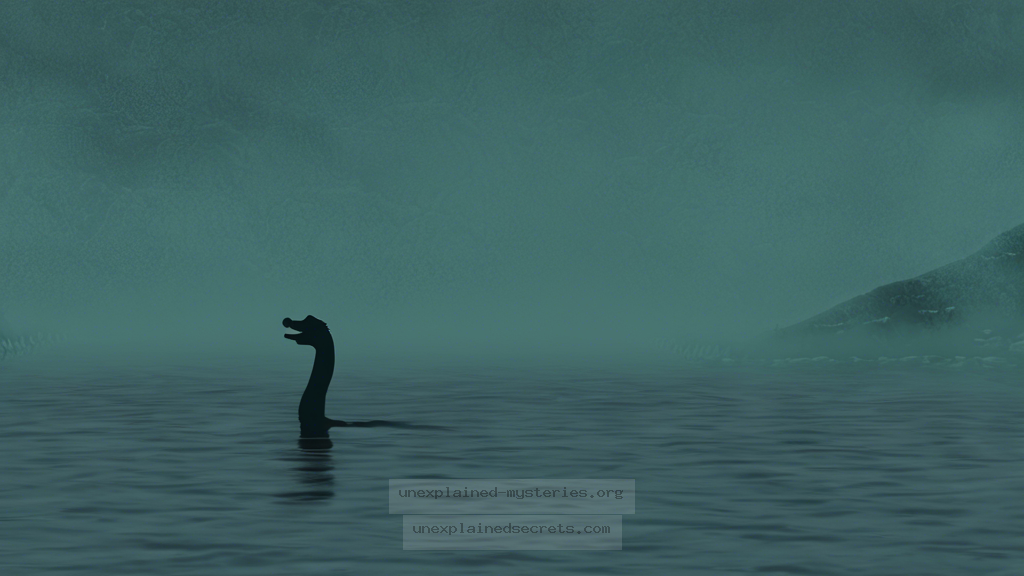What Evidence Supports the Existence of the Loch Ness Monster Beyond Eyewitness Accounts?
What Evidence Supports the Existence of the Loch Ness Monster Beyond Eyewitness Accounts?
The Loch Ness Monster, affectionately known as “Nessie,” has captured the imagination of millions worldwide. Despite countless claims of sightings over the decades, the question remains: what concrete evidence exists to support the notion that this enigmatic creature is more than just folklore? This inquiry is pivotal in the fields of cryptozoology, history, and science, as it delves into the intersection of myth and reality. In this blog post, we will explore various lines of evidence beyond mere eyewitness accounts that have emerged over the years, seeking to unravel the mystery surrounding Loch Ness.
Historical Context of the Loch Ness Monster
The legend of the Loch Ness Monster dates back to ancient times. The first recorded sighting of a creature resembling Nessie occurred in 565 A.D. when St. Columba reportedly encountered a “water beast” in the loch. This account, while steeped in religious narrative, set the stage for centuries of fascination. Throughout the Middle Ages and into the modern era, sporadic reports of strange creatures in the loch emerged, but it wasn’t until the 1930s that Nessie became a household name. The infamous “Surgeon’s Photo,” taken in 1934, purportedly showed the monster’s head and neck, igniting a frenzy of media attention and public intrigue. However, this photograph was later revealed to be a hoax, leading to skepticism regarding the authenticity of subsequent evidence.
Scientific Expeditions and Sonar Investigations
Over the years, multiple scientific expeditions have attempted to probe the depths of Loch Ness using sonar technology. One of the most notable was the “Operation Deepscan” in 1987, which involved deploying boats equipped with sonar equipment across the loch. This massive endeavor resulted in the detection of several unexplained sonar contacts that appeared to be large moving objects beneath the water’s surface. These findings, while intriguing, did not provide definitive proof of Nessie’s existence but did suggest that something substantial might inhabit the loch.
More recently, in 2018, a team of researchers from the University of Otago in New Zealand conducted genetic studies of the loch’s water. They collected water samples and analyzed the DNA present, identifying numerous species but notably no evidence of large unidentified creatures. While this study pointed toward the absence of Nessie, it also highlighted the complexity of the ecosystem in Loch Ness, emphasizing that unexplained phenomena might still reside within.
Photographic Evidence: Analyzing the Claims
Photographs have long been a contentious issue in the Loch Ness saga. Besides the infamous “Surgeon’s Photo,” other images have claimed to capture Nessie in various forms. For instance, in 2007, a photograph taken by a tourist named George Edwards showed a dark shape in the water, which he insisted was Nessie. However, critics often point out that photographs can easily be misinterpreted, manipulated, or misrepresented. This skepticism raises the question of what constitutes credible photographic evidence in the realm of cryptozoology.
| Year | Claimed Evidence | Nature of Evidence | Status of Evidence |
|---|---|---|---|
| 1934 | Surgeon’s Photo | Photograph | Debunked |
| 2007 | George Edwards Photo | Photograph | Controversial |
| 2013 | Drone Footage | Video | Unconfirmed |
Acoustic and Environmental Evidence
Beyond sonar and photography, researchers have turned to acoustic monitoring to seek evidence of Nessie’s existence. In 2019, a study utilized submerged microphones to capture sounds in Loch Ness. The analysis revealed a variety of underwater noises, some of which were atypical for the known fauna of the loch. While these sounds do not directly link to a large creature, they do indicate a vibrant and dynamic environment, leaving the door open for unexplained phenomena.
Moreover, environmental DNA (eDNA) studies have gained traction in recent years. The concept involves analyzing water samples to detect genetic material shed by organisms. While the 2018 study found no evidence of a large unknown creature, it demonstrated the potential of eDNA as a tool for future investigations. The implications of these findings suggest that our understanding of Loch Ness’s ecosystem remains incomplete, and more studies might yield unexpected results.
Alternative Theories: Misidentifications and Myths
As much as the search for the Loch Ness Monster focuses on the possibility of a large creature, other theories propose alternative explanations for sightings. Some researchers argue that many alleged encounters with Nessie can be attributed to misidentified animals, such as otters or large fish. The loch is home to various wildlife, including seals and birds that can create disturbances on the water’s surface, mimicking the movements of a large creature.
Additionally, the idea of Nessie as a mythological entity rooted in local folklore cannot be overlooked. The Scottish Highlands are rich with tales of water spirits and mythological beings, which may have influenced the modern interpretation of Nessie as a prehistoric survivor. This cultural lens adds a layer of complexity to the investigation, suggesting that the Loch Ness Monster may be as much a product of human imagination as it is a creature of the deep.
Common Misconceptions About Loch Ness Evidence
In the quest for evidence of Nessie’s existence, several misconceptions persist. One of the most prevalent is the belief that a creature as large as Nessie could easily evade detection. However, Loch Ness is vast, deep, and murky, making it an ideal habitat for large animals that can easily hide from human observers. Additionally, the myth of Nessie’s longevity has led many to assume that the creature has lived undetected for centuries, while in reality, it may be a series of different creatures over time.
Investigative Best Practices for Cryptozoology
For those interested in investigating the Loch Ness Monster or similar cryptozoological phenomena, adhering to best practices is essential. First and foremost, maintaining a skeptical yet open-minded approach is crucial. Researchers should prioritize scientific methods, employing technology such as sonar, drones, and eDNA analysis to gather data that can be reliably assessed.
Additionally, documenting findings thoroughly, including environmental conditions and any eyewitness accounts, can help create a more comprehensive picture of the situation. Engaging with local historians and enthusiasts can also provide valuable context and insights into the folklore surrounding Loch Ness, ensuring that investigations are rooted in both scientific inquiry and cultural understanding.
Future Developments and Ongoing Research
The future of Loch Ness research is ripe with potential, particularly as technology advances. New sonar systems, improved eDNA analysis techniques, and even artificial intelligence could revolutionize how researchers study the loch. Furthermore, ongoing public interest in Nessie ensures that any significant findings will garner attention, potentially inviting more funding and resources into the field.
Collaborative efforts among universities, cryptozoological organizations, and local communities may yield new discoveries that could finally put the long-standing mystery of Nessie to rest. As researchers continue to explore Loch Ness, the balance between scientific rigor and the allure of legend will play a vital role in shaping our understanding of this enigmatic creature.
Conclusion: The Mystery Continues
In summary, the quest for evidence of the Loch Ness Monster extends far beyond anecdotal sightings. Through scientific expeditions, acoustic monitoring, and an understanding of local folklore, we can begin to piece together the narrative surrounding this elusive creature. While current evidence leans toward the absence of a large unknown species, the complexity and richness of Loch Ness’s ecosystem suggest that mysteries still abound. The enigma of Nessie remains a compelling subject for exploration, inviting both skepticism and wonder as we navigate the waters of myth and reality.
Other Articles
Recent Posts
- What Happened to Flight MH370? The Conspiracy Theories That Still Haunt Us
- What Secrets Lurk Within the Walls of the Infamous Trans-Allegheny Lunatic Asylum?
- What Evidence Supports the Existence of Bigfoot in the Pacific Northwest?
- What Happened to the Indus Valley Civilization? Unraveling the Mysteries of Ancient Urban Life
- Can Telepathy Be Scientifically Proven Through Laboratory Evidence?







